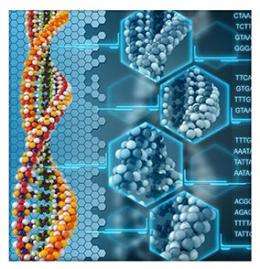New bacteria, potential carbon cycling, bioremediation roles reported

(Phys.org)—Proteomics experts and resources at EMSL contributed to a study published in Science centered on the discovery of new bacteria and the metabolic roles, such as carbon cycling, of bacteria in the environment. The bacteria studied were part of microbial communities collected directly from an acetate-amended subsurface aquifer as part of the U.S. Department of Energy's Integrated Field Research Challenge (IFRC).
The aquifer, located in Rifle, Colorado, is in an area once used to process uranium and now used by the DOE to study biogeochemical processes. Treating such metal-contaminated environments with acetate, which is much like diluted vinegar, stimulates the growth of naturally occurring bacteria. Many of these bacteria are able to derive energy from metals, in the process turning dangerous, soluble metals into safer, more manageable insoluble metals. The research team sequenced nearly 150,000 genes from the IFRC samples and was able to assign these genes to, or reconstruct the genomes in part or in whole for, 87 different bacterial species.
To put these numbers in perspective, only 33 protein-coding genes were known for a group of bacteria in the samples named OD1—the research team expanded on that, recovering 24,000 gene sequences for OD1 bacteria. Impressively, 49 of the 87 genomes belong to species that had never before been characterized at the genome level. Based on the genomic analyses, some of these organisms fell into a new phylogenetic classification named PER or Peregrine, referring to their wandering behavior relative to the existing phylogenetic tree. Proteomics tools at EMSL provided valuable data about the metabolic activity of the bacteria in their native complex subsurface environment, showing that they may play roles in carbon cycling, sulfur cycling, and hydrogen production.
The team's groundbreaking results could lead to improved methods to stimulate bacteria to uptake atmospheric carbon, thus reducing greenhouse gases, and to better apply microbes to remediate toxic metal-contaminated environments.
More information: Wrighton KC, BC Thomas, I Sharon, CS Miller, CJ Castelle, NC VerBerkmoes, MJ Wilkins, RL Hettich, MS Lipton, KH Williams, PE Long, and JF Banfield. 2012. "Fermentation, Hydrogen and Sulfur Metabolism in Multiple Uncultivated Bacterial Phyla." Science 337(6102):1661-1665. DOI: 10.1126/science.1224041
Journal information: Science
Provided by Environmental Molecular Sciences Laboratory


















